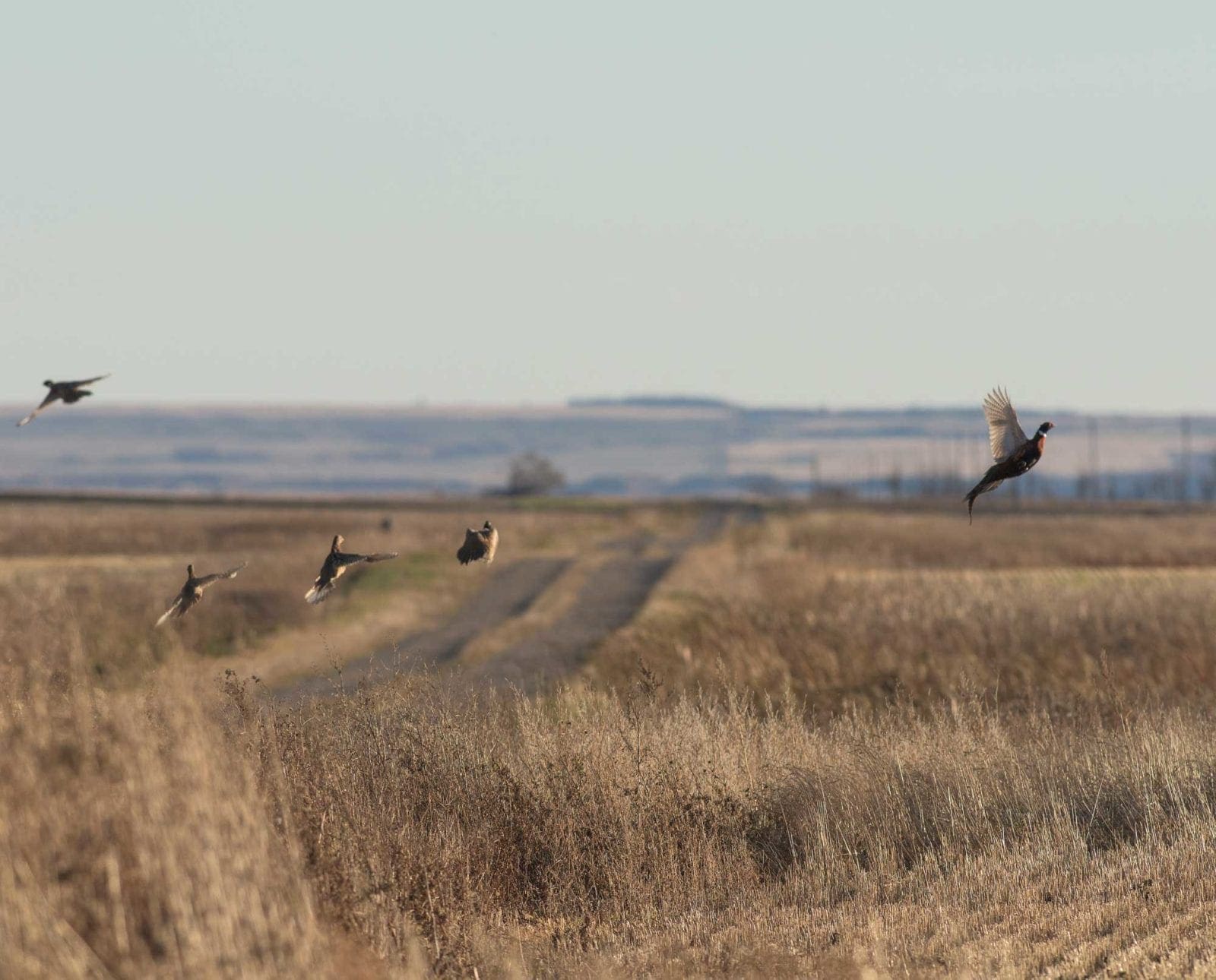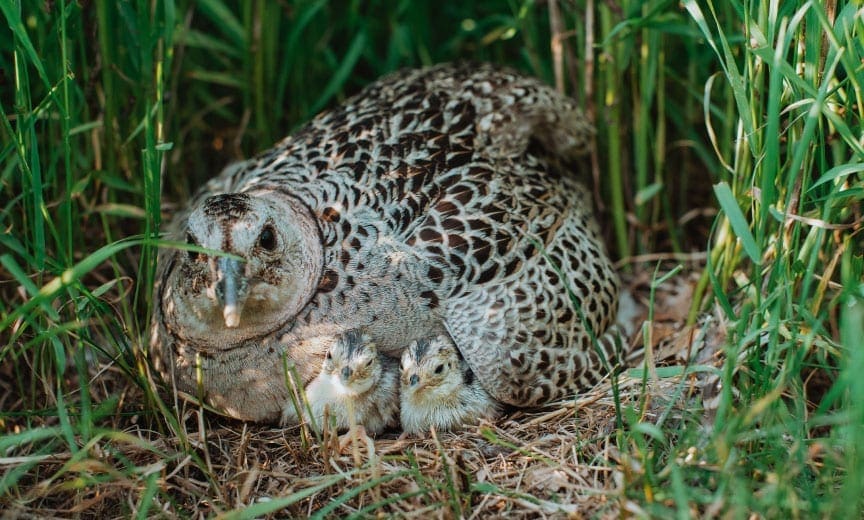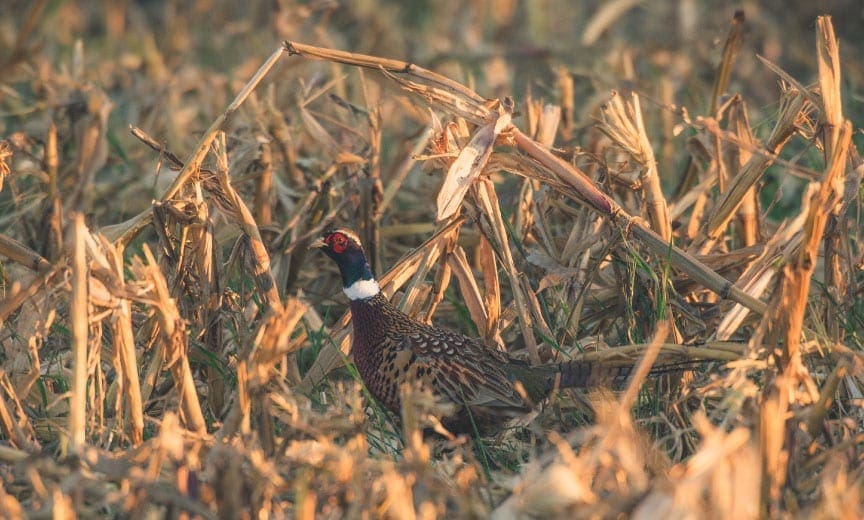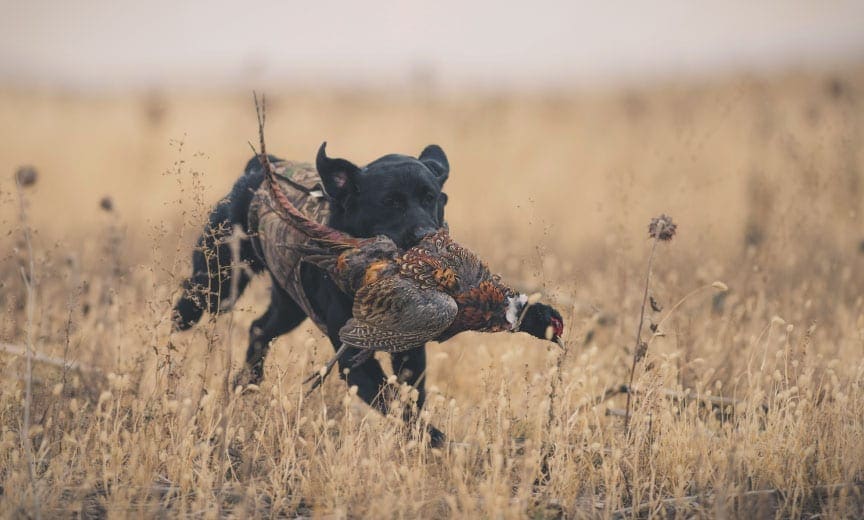Home » Pheasant Hunting » How to Identify Pheasant Habitat
How to Identify Pheasant Habitat

Ryan Lisson is a biologist and regular content contributor to…
Understanding pheasant habitat and how to look for it throughout its range will make you a better hunter
Although the ring-necked pheasant isn’t a native game bird in America, it sure has found a soft spot in many upland hunters’ hearts. From the camaraderie of walking through a field with a group of other hunters to the thrilling cackle and rise of a big rooster, pheasant hunting sure can be addicting.
But what if you don’t have a ton of experience hunting them? What if you’re really interested in the idea, but you don’t have a group of experienced people to hunt with? Here are some pointers on how to find and recognize good pheasant habitat. With any luck, you can get out this season and put it to good use while hunting.
General pheasant habitat
The ring-necked pheasant is generally thought to be a grassland-dependent species. Although they can and do live in many states with varying habitat types and regional differences, there’s a reason some of the best places to hunt them include South Dakota, North Dakota, Minnesota, and Iowa—there’s simply a great mix of the habitats they need. Farmsteads, native grasslands, and wetlands bordered by brushy corridors and shelterbelts all provide prime habitat for the bird.
Here are some of the basic pheasant habitat requirements that you should be looking for on any given hunt.
Grassland habitat
Let’s imagine pheasant habitat as a pyramid. The lowest level (the foundation) would have to be grasslands.
Grassland habitats provide valuable nesting cover, brood-rearing cover, and protection from the elements. Pheasants will utilize native prairie fields, thick Conservation Reserve Program (CRP) fields (usually full of switchgrass), hayfields or fallow fields with a mix of grasses and forbs, and windbreaks or fence lines with un-mowed grass cover and an occasional red cedar.
Without adequate grass cover (for nesting success, thermal cover, etc.), pheasants are much more susceptible to predation or exposure. In fact, pheasant densities are known to increase in proportion to the amount of undisturbed grassland cover (up to a maximum of 50 percent grass, according to the Minnesota DNR Long Range Pheasant Plan). Thus, grasslands are a great starting point when you’re setting out to find some birds.

Riparian and heavy cover areas
The next level of the pyramid is similar to the first but offers something else. Very shallow cattail marshes, ditches and sloughs, and stream corridors with brushy edges can be great winter cover for pheasants. The plants are tall and grow densely, which shelter the birds from cold winds and rain/snow throughout the fall and winter. They also provide great protection from predators.
Think about it: when was the last time you stealthily snuck through a fall-dried patch of cattails? It can’t be done. This allows them to detect predators before they pose a threat. When hunting pheasant on public lands, especially in the late season or during some unpleasant weather, some of the best places include the thickest cattail sloughs or brushy edges simply because other hunters might not venture into them and they offer the best protection for the birds.
Cultivated crop fields
The top-level on the pyramid would consist of food sources. While pheasants do find food sources within grassy and brushy cover as well, cultivated crop fields are an important part of their diet throughout most of their range. Corn, soybeans, and grain (milo, wheat, oat) fields can all offer food for pheasants, while field edges provide a mix of native foraging opportunities (weed seeds and insects).
Crop fields can also be great summer habitat for brood-rearing because the convenient rows offer easy walking for chicks. In the early fall, they also protect pheasants very well from hunters for the same reason—a rooster can simply run down a row until they reach safety on the other side of the field. After harvesting, the tables turn. The sudden lack of cover pushes pheasants into adjacent areas with grass or shrub cover, while they will return to feed in the picked fields throughout the day.

This is the primary danger of the shift in agriculture to mono-cropping. Back in the 1940s and 50s, when pheasant hunting supported some almost unbelievable harvest levels, the landscape consisted of smaller, diverse crop fields with ample wetlands, brushy fencerows, and undisturbed grasslands between. Today, larger fields of corn or soybeans dominate, while wetlands are tiled/drained and fence rows are removed. While it might seem like more food would be a good thing, cover is at least equally important, especially during the cold winter months. Without cover nearby (the base of the pyramid), crop fields might not offer great hunting opportunities by themselves.
Pheasant hunting tactics considering habitats
Using this pyramid example helps paint the importance of each habitat component. But in reality, they are all important at some point throughout the year.
What’s even more critical is how these three habitat types are connected. Pheasants generally occupy a fairly small area. For example, most pheasants won’t travel far in the fall or winter between cover and food sources. The further they travel, the more it exposes them to cold weather and predation. Ideally, you could find a grassy field or cattail slough within at least a quarter-mile of a crop field. This mosaic or patchwork of habitats in close proximity to each other provides the best cover and hunting opportunities.

Pheasants will usually feed early in the morning, retreat to cover during the day, and then feed again in the late afternoon; so it’s up to you to find an area you can hunt (on public lands or private with permission) where these habitat types are all closely connected.
In the morning, focus your hunting on field edges and ditches immediately bordering harvested fields. Generally, pheasants feeding in the fields will either run down the stubble rows or tuck into adjacent cover to hide (hopefully giving you a chance to flush them). These same areas can pan out during the day, too, but you might switch to denser cattail patches or shrubs by the lunch hour, particularly if the weather takes a turn for the worse or the birds are clearly pressured and seeking thicker cover. An hour before the sun sets, transition back to field edges again to round out the hunt and get an opportunity at a feeding bird.
To recap these habitat pieces, the ideal pheasant property could be described like this.
There would be a wetland or riparian corridor of brush and cattails near the middle of the property, where birds would, hopefully, flush to under pressure. Up-slope, on either side from there, would be a strip or larger field of undisturbed grassland or fallow fields. Adjacent to this would be a food plot or crop field of some sort (corn, small grains, etc.) with weedy edges and brushy fencerows connecting all the pieces. This combination would hold birds throughout the year and could offer an opportunity to hunt all day.
Try looking for these habitat types while you’re out this season and see how it pans out.
Ryan Lisson is a biologist and regular content contributor to several outdoor manufacturers, hunting shows, publications, and blogs. He is an avid small game, turkey, and whitetail hunter from northern Minnesota and loves managing habitat almost as much as hunting. Ryan is also passionate about helping other adults experience the outdoors for their first time, which spurred him to launch Zero to Hunt, a website devoted to mentoring new hunters.



